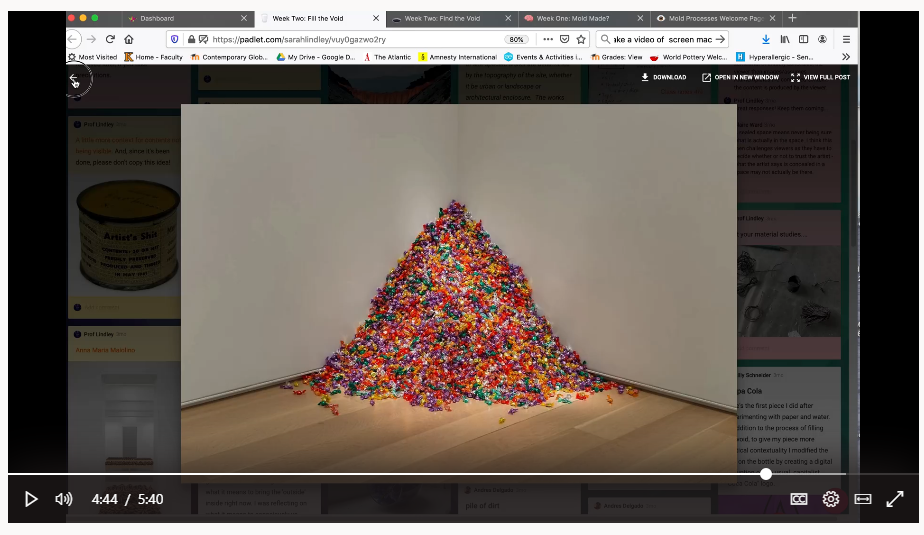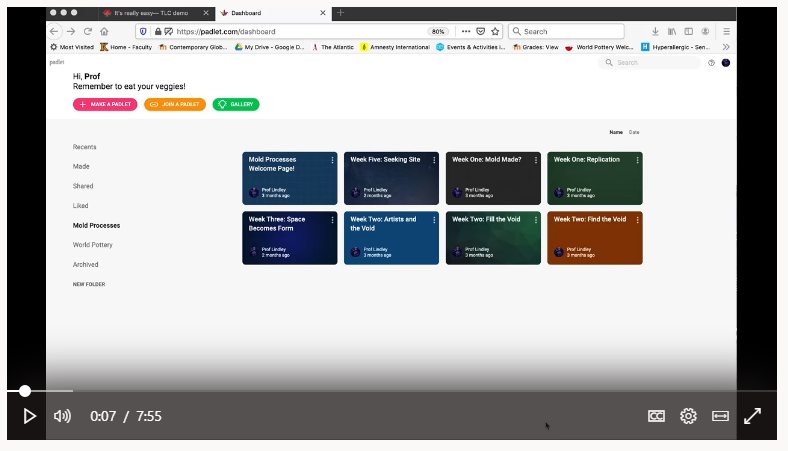Lots of people wonder how it would be possible to teach ceramics and sculpture online. It turns out that giving up the messy materials of clay and plaster was less disruptive than losing the group discussion and shared workspace that are essential to a sense of community and rapid artistic growth. This 5-minute video shows how I used the interactive platform of Padlet to introduce assignments, emulate a shared workspace environment, and foster asynchronous discussion. Padlet is colorful, easy to use and edit, and encourages creativity. It’s also nonlinear (unless you want it to be), and nonhierarchical. I used my own $10/month account to create all the Padlets, which meant students were able to use a free account for the entire term.
Watch this 8-minute “how to” video to see how easy it is to start using Padlet and visit the Padlet from the video to see how it works.
These videos are posted at Stream. Click here to learn more.
I don’t like the ads and lack of security with Youtube, so I tried using Vimeo for streaming videos at the beginning of the term. After some consultation with the Amazing Josh Moon, I realized that Streams was easier and better than Youtube, because
- videos can be linked directly to Team sites and/or you can even create a closed video channel for your class
- you can create the video so it is available to the entire college community, just your class, or just a few people
- you can see how many times the video has been viewed
- Streams automatically develops text captions for the narrative
- no ads
- no subscription fee
Alternatively, I also found OneDrive to be very useful for short videos. OneDrive tells you WHO watched the video. That was helpful for having keeping track of engagement.


